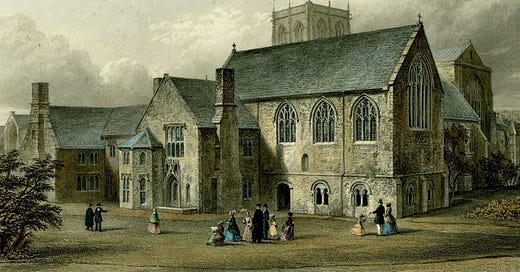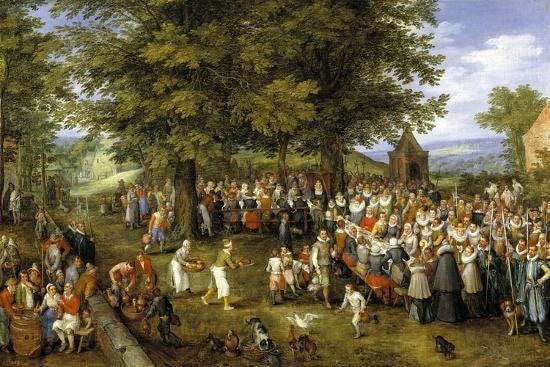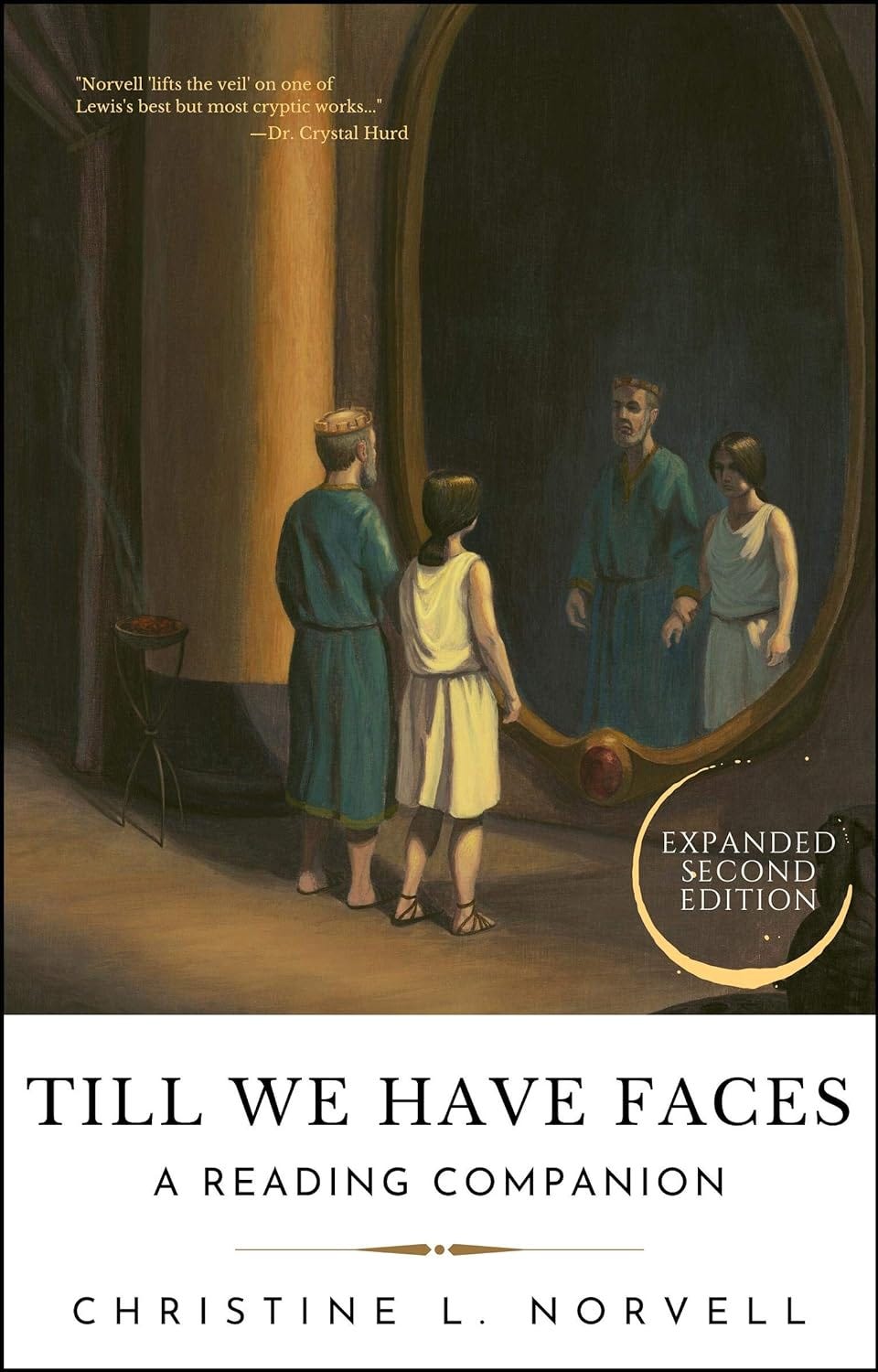Though I have a number of international readers, I wanted to take a moment to express my dismay and sorrow for the situation surrounding former President Trump’s attempted assassination. It’s not that I have some keen insight, but as words swirl and analysis fills our news feeds, I was encouraged by Malcolm Guite and his poem “Every Idle Word”—
What if every word we say
Never ends or fades away,
Gathers volume gathers weigh,
Drums and dins us with dismay
Surges on some dreadful day
When we cannot get away
Whelms us till we drown?What if not a word is lost,
What if every word we cast
Cruel, cunning, cold, accurst,
Every word we cut and paste
Echoes to us from the past
Fares and finds us first and last
Haunts and hunts us down?What if every murmuration,
Every otiose oration
Every oath and imprecation,
Insidious insinuation,
Every blogger’s aberration,
Every facebook fabrication
Every twittered titivation,
Unexamined asservation
Idiotic iteration,
Every facile explanation,
Drags us to the ground?What if each polite evasion
Every word of defamation,
Insults made by implication,
Querulous prevarication,
Compromise in convocation,
Propaganda for the nation
False or flattering persuasion,
Blackmail and manipulation
Simulated desperation
Grows to such reverberation
That it shakes our own foundation,
Shakes and brings us down?Better that some words be lost,
Better that they should not last,
Tongues of fire and violence.
O Word through whom the world is blessed,
Word in whom all words are graced,
Do not bring us to the test,
Give our clamant voices rest,
And the rest is silence.
Like you, I pray and hope that words of violence will not last, that unity will come.
In the classroom
This past week I joined parents and teachers alike to put a fresh coat of paint on three classrooms in our Upper School’s rented space. We may not be professionals, but paint can work wonders!
I’m not sure why school design is seen differently from businesses or homes, but every school has a decor whether they are aware of it or not. Many times, a school has no control over the exterior of a rented building or shared space, but in most cases they can make a stamp on the interior.
The first question, of course, is what should an educational space look like? Filled to the brim or minimal vanilla? Or something in between? The better question might be to ask why we decorate or design a space.
My undergraduate education courses had a why. Secondary teachers were to fill every square inch with something students could learn. Surely students absorb information that surrounds them on classroom walls. Posters, charts, quotes, cartoons, student work, perhaps a piece of art. As a new teacher, I never questioned it. I bought lots of wall stuff.
I first heard Dr. Steve Turley address aesthetics in the classroom more than a decade ago at a classical Christian educators’ conference. He spoke of intentionality and beauty, of area rugs and framed Van Goghs, of God’s design within a classroom space, a concept I had never heard of in my public school teaching days.
Turley later self-published much of this same material in his short primer Beauty Matters: Creating a High Aesthetic in School Culture followed by Awakening Wonder: A Classical Guide to Truth, Goodness & Beauty (2018) with Classical Academic Press.
In 2024, there are plenty of articles and newer books out there discussing similar ideas. I like one article by designer Jon Buell and how he explains why we should value beauty in the classroom space. In From Parking Lots to Bulletin Boards: Why Aesthetics Matter in a Classical Classroom, he writes,
It is a God-given responsibility for man to create; therefore, our buildings are a doxology in and of themselves. We must think about what our campuses say to the parents who are making significant sacrifices to pay for their child’s education; to the prospective family who walks on campus for an admissions interview; and for the outside world that knows nothing of classical education.
Buell details what sounds like an even more extreme concept called “a theology of Aesthetics”—
Educators who are interested in helping students order their loves, and who want to create an atmosphere of beauty throughout their space should develop a theology of Aesthetics.
These are the greater reasons why an individual or communal space share a style. Design is not separate from who we are as followers of Christ. Buell delineates five ways to create beauty on a campus (or in a home!):
Consistency
Connect the inside out
Develop the spaces in between
Representation of joy as found in the Gospel
Less is more
I encourage you to read the full article.
Aside from painting walls, we are filling them with beautiful images. I like to think of art like a window. I imagine a student sitting at their desk and gazing at a framed print or canvas as if they were looking outside, hopefully outside of the classroom. Does the piece have color and layers of back and foreground to keep their interest?
It has been a treasure hunt of the best kind. On our Lower School campus for our 4th grade medieval studies, I chose one of J.M.W. Turner’s castle paintings along with Jan Brueghel’s “Wedding Banquet.”
For our 5th grade New World focus, Willem van de Velde the Younger’s “Ships in the Road” balances George Inness’s “Medfield, Massachusetts.” And finally with Albert Bierstadt’s “The Oregon Trail, 1869”, our 6th grade learns about early America.
What about you? What do you add to the spaces that surround you at home or work? Share some thoughts and ideas with us!
And don’t forget. My next letter at the end of July is all about summer reads. Share a title that you’re reading this summer. I would love to hear about what interests you! As always, thanks for reading and listening.
Christine
Perfect for beginners, this handy study guide for C.S. Lewis's novel is a blend of summary and scholarly commentary. The second edition includes references to leading commentary from Lewis scholars as well as key parallels from Lewis’s other works like The Four Loves, Surprised by Joy, and An Experiment in Criticism. Each chapter includes discussion questions designed for students, teachers, book clubs, and church groups.







Also, I’m slowly reading the rich writing of Timothy G. Patitsas’ book The Ethics of Beauty.
Thank you for the poem on Every Idle Word. Timely and timeless. Once again your newsletter embodies themes that resonate and affirm places of the heart I’m tending. Beauty and dwelling space are precious to me. Images of chaos surround, flicker and fill our environment. One thing I appreciate about spaces that are not mult-functional is the intent to draw you into the set apart place. Space that allows you to focus on Beauty and receive rest from the noise of the world. It gives your whole being space to recalibrate. Certain church spaces do this and gardens. I’m glad that your school is embracing ways to provide windows and spaces of invitation to such beauty and inspiration.